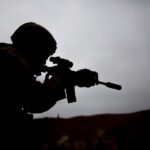The Army’s Role in Humanitarian Missions and Disaster Relief
When disaster strikes, whether it be a natural disaster such as a hurricane, earthquake, or flood, or a man-made disaster like a terrorist attack or civil unrest, the Army plays a crucial role in providing humanitarian aid and disaster relief. The Army’s unique capabilities, resources, and expertise make it a vital partner in responding to crises around the world.
Immediate Response
One of the key roles of the Army in humanitarian missions and disaster relief is providing immediate response and assistance in the aftermath of a disaster. Army personnel are often among the first on the scene, helping to search for survivors, assess damage, and provide medical assistance to those in need. The Army’s rapid deployment capabilities enable it to quickly mobilize resources and personnel to affected areas, ensuring that help reaches those who need it most.
In addition to providing immediate relief, the Army also plays a critical role in establishing order and security in the aftermath of a disaster. Army personnel are often called upon to help maintain law and order, protect relief workers and aid supplies, and prevent looting and other criminal activities. Their presence can help stabilize a volatile situation and provide a sense of security to those affected by the disaster.
Logistical Support
Another key role of the Army in humanitarian missions and disaster relief is providing logistical support. The Army has the resources and expertise to transport and distribute aid supplies, set up temporary shelters, and provide infrastructure support in disaster-stricken areas. Army personnel are trained in logistics and supply chain management, ensuring that aid reaches those in need in a timely and efficient manner.
Whether by land, air, or sea, the Army can deploy a wide range of assets to support relief efforts, including helicopters, transport planes, trucks, and ships. These assets enable the Army to reach remote or inaccessible areas that may be cut off from traditional forms of transportation. By leveraging their logistical capabilities, the Army can ensure that aid reaches even the most isolated communities.
Medical Assistance
One of the most important roles of the Army in humanitarian missions and disaster relief is providing medical assistance to those affected by a disaster. Army medical personnel are highly trained and equipped to provide emergency medical care to disaster victims, including treating injuries, providing vaccinations, and preventing the spread of disease.
The Army also operates field hospitals and medical clinics in disaster areas, providing critical medical services to those in need. These facilities are staffed by doctors, nurses, and other medical professionals who are experienced in treating a wide range of injuries and illnesses. By providing medical assistance, the Army helps to save lives, reduce suffering, and prevent further health complications in the aftermath of a disaster.
Infrastructure Support
In addition to providing immediate relief and medical assistance, the Army also plays a crucial role in providing infrastructure support in disaster-affected areas. Army engineers are trained to assess and repair damage to critical infrastructure such as roads, bridges, and buildings, ensuring that aid can flow smoothly and efficiently to those in need.
Army engineers also help to build temporary shelters, repair water and sanitation systems, and restore power and communications infrastructure in disaster areas. By rebuilding essential infrastructure, the Army helps to restore a sense of normalcy to affected communities and support long-term recovery efforts.
Conclusion
In conclusion, the Army’s role in humanitarian missions and disaster relief is critical to helping those in need in the aftermath of a crisis. Whether providing immediate response, logistical support, medical assistance, or infrastructure support, the Army’s unique capabilities and expertise make it a valuable partner in responding to disasters around the world. By working alongside other relief organizations and local authorities, the Army helps to save lives, reduce suffering, and support long-term recovery efforts in disaster-affected areas.


